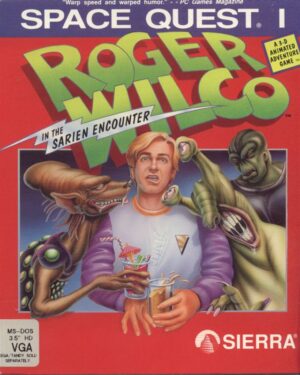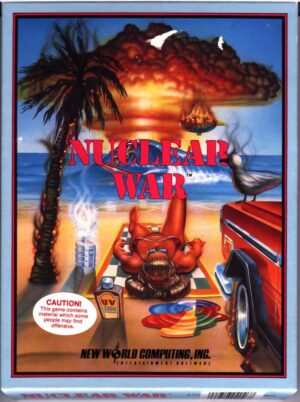Retro Replay Review
Gameplay
The core gameplay of J.R.R. Tolkien’s The Lord of the Rings, Vol. II: The Two Towers builds directly on the systems introduced in Vol. I. Players command multiple parties in a top-down perspective, guiding characters through diverse Middle-earth environments. Combat is real-time with pause, allowing you to give orders to each party member, switch formations, and apply special abilities earned through experience. This structure supports both strategic depth and the urgency of battle as you face orcs, trolls, and other foes.
(HEY YOU!! We hope you enjoy! We try not to run ads. So basically, this is a very expensive hobby running this site. Please consider joining us for updates, forums, and more. Network w/ us to make some cash or friends while retro gaming, and you can win some free retro games for posting. Okay, carry on 👍)
One of the standout features is the way the game mirrors the split narrative of the second book. As Frodo and Sam track Gollum towards Mordor, Aragorn, Legolas, and Gimli pursue the Uruk-hai in Rohan, while Merry and Pippin embark on an unexpected adventure with Treebeard. The frequent party switches keep encounters fresh, forcing you to adapt tactics to different team compositions and character skills. Whether sneaking past a patrol as Frodo or cutting swaths through enemy ranks as the warrior trio, variety is built into every quest.
Quests range from straightforward “seek and destroy” missions to more complex objectives like scouting enemy forts, rescuing prisoners, or negotiating with Ents. The game also offers side-quests that deepen character relationships and award valuable gear or experience. While some fetch quests may feel repetitive, their inclusion helps recreate the epic scope of Tolkien’s world and encourages exploration of hidden corners of Fangorn Forest or the plains of Rohan.
Character progression feels satisfying. Each hero gains levels by defeating monsters and completing quests, unlocking stronger attacks, healing spells, or special party-wide buffs. Party management involves equipping gear found in chests, acquired from vendors, or looted from defeated enemies. Balancing your party’s resources—potions, rations, and ammunition—adds a light survival element, especially when venturing into unexplored wilderness zones.
Overall, the gameplay strikes a balance between role-playing depth and action-oriented skirmishes. While modern gamers may find some pacing slow and UI conventions dated, fans of classic CRPGs will appreciate the intricate strategies, meaningful choices, and faithful reflection of Tolkien’s epic battles.
Graphics
Visually, The Two Towers presents a charming yet utilitarian sprite-based aesthetic typical of early 1990s CRPGs. Character sprites are detailed enough to convey the distinct looks of each hero—Frodo’s hobbit stature, Aragorn’s ranger’s cloak, Legolas’s elven grace—while monsters and NPCs display enough variety to keep worlds feeling lived-in. The top-down perspective is supplemented with occasional cinematic cutscenes that, although low-resolution by today’s standards, capture key story moments with dramatic flair.
Environment design is one of the game’s strengths. Players journey through misty riverbanks, dense forests of Fangorn, windswept plains of Edoras, and the dark approaches to Mordor. Each area uses a limited color palette effectively, evoking atmosphere—golden wheat fields under a stormy sky, shadowy entanglements of tree roots, or the barren black dunes under Sauron’s watchful eye. These backdrops not only set mood but also assist gameplay by clearly delineating impassable terrain and hidden pathways.
Animations in combat are brisk and functional. Sword strikes, arrow volleys, and spell effects rarely dazzle but remain clear and responsive. Enemy death sequences are brief but satisfying, with corpses lingering long enough to remind you of your victories without causing screen clutter. The interface overlays—health bars, mana indicators, and action menus—stay out of the way, offering quick visual feedback without distracting from the action.
Object detail on gear and environment props can feel chunky by modern metrics, yet this simplicity harks back to a time when imagination filled in the gaps. Occasional texture repetition in floor tiles or forest patches is balanced by unique boss arenas and scripted set-pieces, ensuring that no two chapters look exactly the same. For players seeking cinematic grandeur, the game’s art may seem modest, but for lovers of pixel-era charm, its environments remain immersive.
Story
Drawing faithfully from Tolkien’s The Two Towers, the game weaves three parallel narratives: Frodo and Sam’s perilous journey with Gollum, Merry and Pippin’s awakening to Entish lore, and the hunt for Saruman’s forces led by Aragorn’s fellowship. Key dialogue excerpts and event triggers recreate the novel’s pacing, from the tension of miniature skirmishes to the epic scale of Helm’s Deep. While some side-stories are game-original, they feel authentic, enriching minor characters without overshadowing main plot beats.
Characterization shines through in scripted cutscenes and in-game interactions. Gollum’s duplicitous nature is on full display, forcing players to weigh trust versus necessity when deciding how to deploy him. Meanwhile, arming Ents for war or boosting Rohirrim morale provides insight into the cultures of Middle-earth. Each party’s banter and reactions reinforce personalities established in the books, offering fans moments of resonance and unexpected warmth.
Because the narrative frequently switches perspectives, pacing sometimes feels fragmented, but it also fosters anticipation—just as Tolkien intended when alternating chapters in the novel. The urgency of movement is palpable when Frodo narrowly escapes Nazgûl or when reinforcements are needed at Helm’s Deep. At key junctures, the game provides flexibility in how you resolve objectives, subtly reminding players that choices, even within a linear storyline, carry weight.
For newcomers, exposition sequences and in-game journals help fill lore gaps, ensuring that prior knowledge of Tolkien’s works isn’t mandatory. However, true immersion comes when fans recognize locations and quotations lifted directly from the text. This balance of accessibility and authenticity makes The Two Towers appealing to both RPG enthusiasts and ardent Tolkien devotees.
Overall Experience
J.R.R. Tolkien’s The Lord of the Rings, Vol. II: The Two Towers offers a richly detailed CRPG experience that remains engaging decades after its release. Its blend of tactical real-time combat, multi-party exploration, and narrative fidelity to the source material resonates strongly with fans of epic fantasy. While its age shows in certain UI conventions and graphic limitations, it compensates through deep mechanics and unwavering atmosphere.
Session length varies by player approach: a dedicated speed-runner might finish core missions in under twenty hours, whereas completionists exploring every ruin and side-quest can exceed thirty hours. Replay value is bolstered by the branching nature of some decisions—will you trust Gollum fully, or keep him on a short leash?—and by the satisfaction of mastering each party’s unique skill set. For group play, sharing control of different characters adds a communal dimension often missing in solo RPGs.
Sound design is subtle but effective, from ambient forest noises to clashing steel and distant war drums. Periodic music cues evoke the sweeping score of Peter Jackson’s films, though melodies are simple MIDI renditions. Voice samples are rare but used judiciously at dramatic moments, giving weight to pivotal dialogue without overloading limited storage capacities of the time.
Ultimately, The Two Towers is more than a nostalgic relic: it’s a testament to how faithfully adapting a beloved literary work can result in a rewarding and memorable gaming journey. While newcomers should be prepared for some dated mechanics, those who appreciate strategic depth, narrative ambition, and Tolkien’s world will find this adventure well worth undertaking.
 Retro Replay Retro Replay gaming reviews, news, emulation, geek stuff and more!
Retro Replay Retro Replay gaming reviews, news, emulation, geek stuff and more!









Reviews
There are no reviews yet.